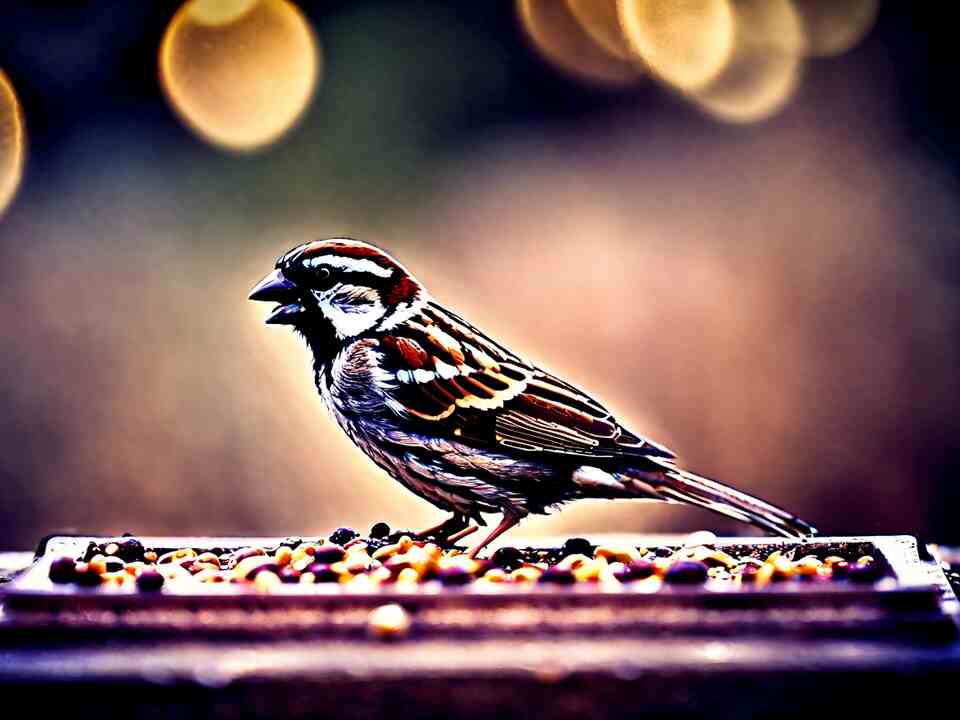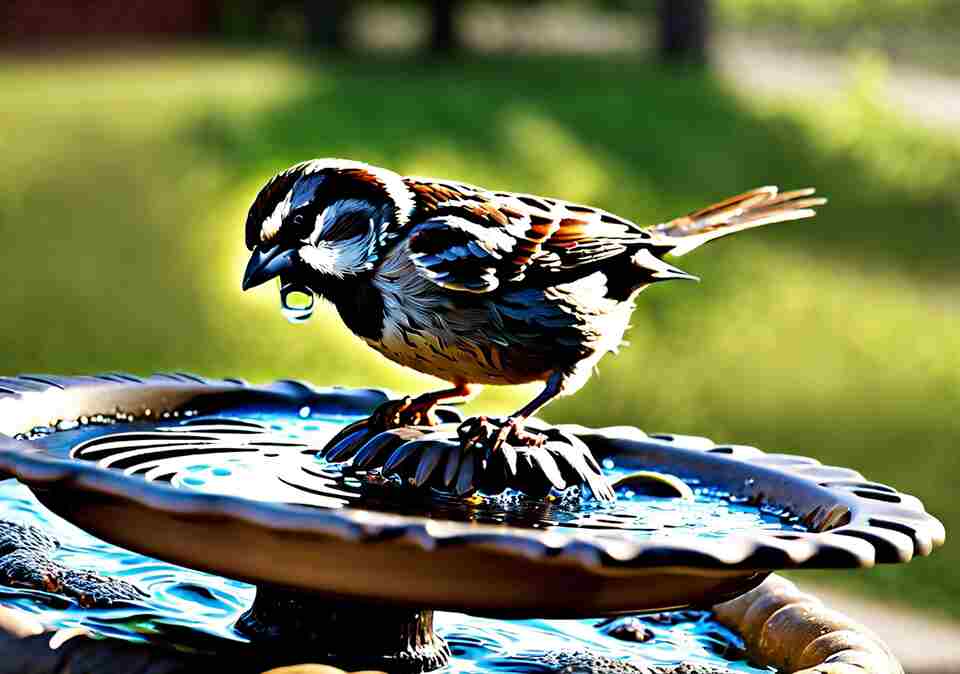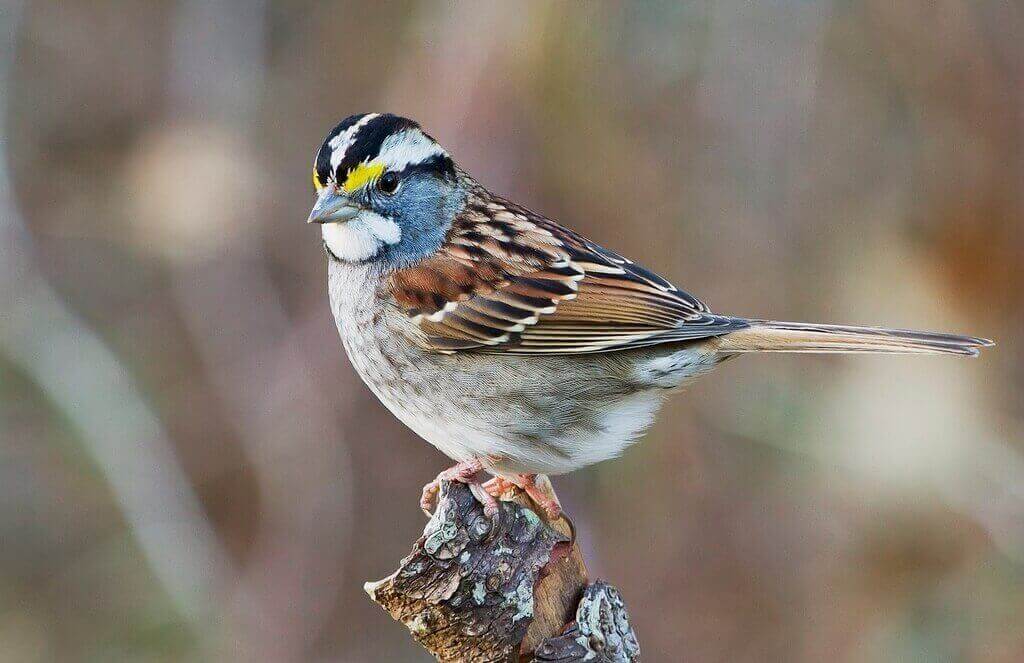
Hey, there! Ever longed for some company in your backyard? Well, let’s make it happen! Today, I’m thrilled to guide you on how to invite Sparrows to hang out with us. It’s like rolling out the welcome mat for our little bird buddies! So, grab a seat, and let’s sprinkle some magic to turn our backyard into the coolest hangout spot for these chirpy pals!
Table of Contents
- 1 Effective Strategies for Attracting Sparrows to Your Backyard
- 2 Nurturing a Sparrow-Friendly Environment: Essential Considerations
- 2.1 Providing Ideal Conditions for Sparrows: A Comprehensive Guide
- 2.2 Establishing a Reliable Food Source
- 2.3 Ensuring Access to Fresh Water
- 2.4 Offering Suitable Nesting Opportunities
- 2.5 Minimizing Disturbances and Predator Risks
- 2.6 Native Plant Diversity
- 2.7 Avoiding Pesticides and Chemicals
- 2.8 Monitoring and Adapting Your Efforts
- 3 Conclusion
- 4 Author
Key Takeaways:
- Use ground or platform feeders to attract Sparrows.
- Provide a variety of seeds, grains, and small insects for their diet.
- Create a welcoming environment with shrubs and bushes for nesting.
- Avoid using pesticides to maintain a healthy habitat for Sparrows.
- Regularly clean and maintain feeders to ensure they remain inviting.

Effective Strategies for Attracting Sparrows to Your Backyard
Backyard Sparrow Sanctuary: Transforming Your Outdoor Space
Sparrows are charming and lively birds that can bring a sense of liveliness and natural beauty to your backyard. These resilient little creatures are adaptable and thrive in urban and suburban environments, making them an excellent choice for homeowners looking to attract more wildlife to their outdoor spaces. By implementing a few strategic steps, you can create a welcoming and inviting habitat that will have sparrows flocking to your backyard in no time.
Provide A Reliable Water Source
One of the most crucial elements in attracting sparrows is ensuring they have access to a reliable source of clean, fresh water. Sparrows require water for drinking and bathing, and providing a birdbath or small water feature can be a highly effective way to draw them in. Place the water source in a relatively open area, away from dense vegetation or areas with high foot traffic, to make it easily accessible for the birds. Keep the water clean and replenished regularly to maintain its appeal.
Offer Suitable Nesting Opportunities
Sparrows are cavity-nesting birds, meaning they seek out small, protected spaces for their nests. Providing suitable nesting sites can be a significant draw for these feathered friends. Consider installing birdhouses or creating natural nesting areas by leaving small gaps or cavities in your fencing, siding, or other structures. Ensure the nesting sites are placed in sheltered, quiet areas of your backyard, and monitor them periodically to maintain cleanliness and prevent any potential issues.
Cultivate Bird-Friendly Vegetation
The type of plants and vegetation you have in your backyard can greatly influence the presence of sparrows. Opt for a diverse mix of native plants, shrubs, and trees that provide both food and cover for the birds. Sparrows thrive on a diet of seeds, insects, and berries, so incorporate plants that offer these resources, such as native grasses, seed-bearing flowers, and berry-producing bushes. Additionally, leave some areas of your yard slightly overgrown or with fallen leaves and branches, as these offer valuable nesting materials and hiding spots for the sparrows.
Offer Supplemental Feeding
While sparrows are adept at finding their own food sources, providing supplemental feeding can be an effective way to attract and retain them in your backyard. Set up a dedicated ground feeders or platform feeders stocked with a variety of bird seeds, suet, or mealworms. Position the feeder on the ground, or near the ground in a location that is visible from your home, but also offers some nearby cover for the birds to feel safe and secure. Regularly maintain and refill the feeder to ensure a consistent food source.
Create A Safe and Inviting Environment
Sparrows are relatively small and vulnerable birds, so it’s essential to create a safe and inviting environment for them in your backyard. Avoid using pesticides or harsh chemicals that could harm the birds or their food sources. Additionally, consider installing bird-friendly features like perches, roosting spots, and dense vegetation that provide shelter and protection from predators and the elements.
By implementing these strategies, you can transform your backyard into a sparrow-friendly haven, attracting these charming birds and enjoying their lively presence throughout the seasons. With a little planning and dedication, you can create a thriving sparrow population right in your own outdoor space.
Nurturing a Sparrow-Friendly Environment: Essential Considerations
Providing Ideal Conditions for Sparrows: A Comprehensive Guide
Sparrows are charming, resilient birds that can thrive in both urban and rural environments. If you’re eager to welcome these feathered friends into your backyard, there are several key considerations to keep in mind. By creating a sparrow-friendly habitat, you can not only enjoy their lively presence but also contribute to the overall well-being of your local avian population.
Establishing a Reliable Food Source
Sparrows are primarily seed-eaters, and providing them with a consistent food supply is crucial. Consider installing ground feeders or platform feeders filled with high-quality seed mixes that cater to their dietary preferences. Additionally, planting native plants and shrubs that produce berries, seeds, and insects can create a natural and sustainable food source for your sparrow visitors.
Ensuring Access to Fresh Water
Sparrows require a reliable source of clean, fresh water for drinking and bathing. Providing a birdbath or a shallow dish filled with water can be an excellent way to meet this need. Regularly maintaining the water source and keeping it clean can help prevent the spread of diseases.
Offering Suitable Nesting Opportunities
Sparrows are cavity-nesting birds, meaning they prefer to build their nests in small, protected spaces. Providing nesting boxes or creating natural nesting sites by leaving dead tree branches or logs can greatly increase the chances of sparrows taking up residence in your backyard.
Minimizing Disturbances and Predator Risks
Sparrows are relatively vulnerable to predators, such as cats, hawks, and snakes. Ensuring that your backyard is free from potential threats can help create a safe haven for your feathered friends. Consider installing protective structures, such as dense shrubs or fencing, to shield the nesting areas and provide a sense of security.
Native Plant Diversity
Planting a variety of native plants, trees, and shrubs can greatly enhance the overall appeal and functionality of your sparrow-friendly backyard. Native plants not only provide food and nesting resources but also support the local ecosystem, attracting a diverse array of insects and other wildlife that can benefit sparrows.
Avoiding Pesticides and Chemicals
The use of pesticides and chemical fertilizers can have detrimental effects on sparrows and other wildlife. Opt for organic gardening methods and natural pest control strategies to maintain a safe and healthy environment for your feathered visitors.
Monitoring and Adapting Your Efforts
Observe the activity and behavior of sparrows in your backyard and be prepared to make adjustments to your sparrow-friendly habitat as needed. Monitor the success of your efforts and be willing to experiment with new strategies to ensure the continued well-being of your sparrow population.
By incorporating these essential considerations into your backyard landscape, you can create a welcoming and sustainable environment for sparrows to thrive. Embrace the joy of watching these delightful birds flutter and chirp in your own outdoor oasis, and take pride in your contribution to the conservation of these resilient and charismatic creatures.

Conclusion
Attracting sparrows to your backyard can be a rewarding and enriching experience, providing you with the opportunity to observe these delightful little birds up close and contribute to their wellbeing. By implementing the effective strategies we’ve discussed, such as providing a reliable source of food, water, and suitable nesting sites, you can create a sparrow-friendly environment that will draw these charming birds to your outdoor space.
Nurturing a sparrow-friendly environment requires careful consideration of their specific needs and preferences. Ensuring a consistent food source, whether through a bird feeder filled with their favorite seeds or by planting native vegetation that produces their preferred berries and insects, can go a long way in making your backyard an inviting haven for these feathered friends. Additionally, providing a reliable and clean water source, such as a birdbath or small fountain, can further entice sparrows to make your yard their new home.
Equally important is the creation of suitable nesting sites. Sparrows often seek out sheltered areas, such as dense shrubs, evergreen trees, or even specially designed birdhouses, to build their cozy little nests. By incorporating these elements into your backyard landscape, you’ll be catering directly to the needs of these delightful birds, making them feel safe, comfortable, and encouraged to take up residence.
Furthermore, maintaining a natural, pesticide-free environment can greatly benefit the sparrows by ensuring a plentiful supply of the insects and seeds they rely on for sustenance. Avoiding the use of harsh chemicals and opting for organic gardening practices can create a healthier ecosystem that supports not only sparrows but a diverse range of other backyard wildlife as well.
Patience and persistence are key when it comes to attracting sparrows to your outdoor space. It may take some time for these birds to discover and fully embrace the welcoming environment you’ve created, but with dedication and a genuine interest in their well-being, you can steadily increase the chances of sparrows choosing your backyard as their new home.
By implementing the strategies outlined in this article, you’ll not only be providing a safe and nurturing haven for sparrows but also contributing to the overall ecological balance of your local environment. These charming little birds play a vital role in the natural world, serving as pollinators, seed dispersers, and even natural pest control agents. By inviting them into your backyard, you’re not only enhancing your own enjoyment and connection with nature but also supporting the broader ecosystem.
Attracting sparrows to your backyard can be a rewarding and fulfilling endeavor, offering you the opportunity to observe these delightful birds up close while also contributing to their well-being and the overall health of the local environment. By focusing on the essential elements of providing food, water, and nesting sites, and maintaining a sparrow-friendly landscape, you can create a sanctuary that will captivate and delight you for years to come.


